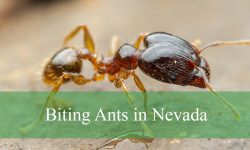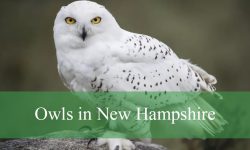Texas is home to a rich diversity of bird species, and among the most intelligent and fascinating members of its avian fauna are crows and ravens. These birds, belonging to the family Corvidae, are well known for their striking black plumage, complex social behaviors, and impressive problem-solving abilities.
While they are often misunderstood due to their bold personalities and loud calls, crows and ravens play important roles in Texas ecosystems, from controlling insect and small rodent populations to acting as scavengers that help keep the environment clean.
This guide explores the four species of crows and ravens you are most likely to encounter in Texas, providing detailed information on their appearance, size, behavior, calls, habitats, and some interesting fun facts.
Understanding these birds in their natural environments is essential for birdwatchers, photographers, and wildlife enthusiasts who want to identify and appreciate them. From urban neighborhoods to remote desert landscapes and coastal wetlands, crows and ravens are adaptable and can be observed in a variety of habitats throughout the state. Their distinctive calls, clever foraging techniques, and social behaviors make them fascinating subjects for study and observation.
Whether you are hoping to identify these birds during a backyard observation or while exploring Texas state parks, this guide will provide all the information you need to recognize each species, understand their behaviors, and learn some fun facts that highlight their unique role in the state’s ecology.
American Crow (Corvus brachyrhynchos)
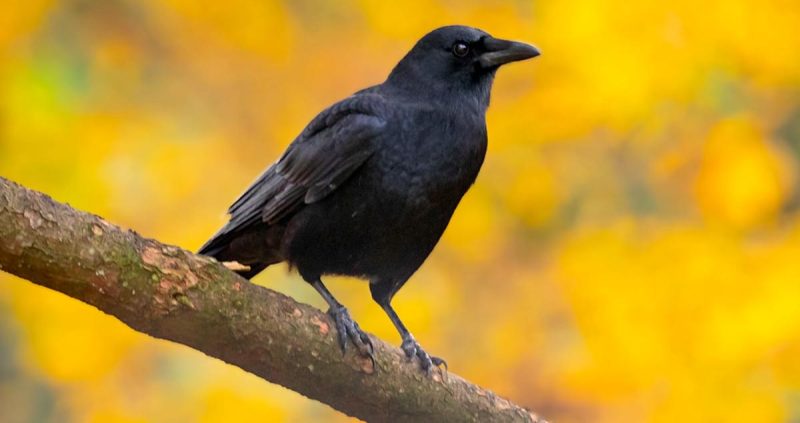
Identification and Physical Features
The American Crow is the most commonly seen corvid across Texas and is easily identified by its all-black plumage, glossy feathers, and sturdy, slightly curved bill. Adults generally measure between 16 and 21 inches in length, with a wingspan ranging from 33 to 39 inches. They weigh approximately 11 to 21 ounces, making them medium-sized birds within the Corvidae family. One of the key identification features of the American Crow is its smooth, uniform black coloration across the head, body, wings, and tail, which distinguishes it from ravens that appear larger and more rugged.
The glossy black feathers shimmer with a subtle iridescence in sunlight, and the eyes are dark brown, giving them an alert and intelligent appearance. The tail of an American Crow is fan-shaped when spread, which can help differentiate it from ravens whose tails are wedge-shaped. Juvenile crows can be slightly duller in color, but their overall silhouette and size remain consistent with adult birds.
Behavior and Social Structure
American Crows are highly social and often observed in flocks, especially outside of the breeding season. They are known for their intelligence, capable of using tools, solving complex problems, and remembering faces. During the day, they forage actively, feeding on a wide variety of foods including insects, small mammals, fruits, seeds, and carrion. Their adaptability allows them to thrive in urban, suburban, and rural settings, and they often take advantage of human-altered environments to find food, such as garbage bins or agricultural fields.
Crows are also highly vocal, using a variety of caws, rattles, and clicks to communicate within their social groups. The American Crow’s call is a familiar “caw-caw” sound that carries over long distances, which they use for alerting other crows to danger, coordinating group movements, and signaling food sources. During the breeding season, these birds display cooperative behaviors, sometimes helping relatives feed and protect young crows.
Habitat and Distribution in Texas
American Crows are extremely adaptable and found statewide in Texas, from the Gulf Coast to the Panhandle and across central woodlands and urban areas. They occupy forests, grasslands, farmlands, suburban neighborhoods, and even city parks. Crows often roost communally in large trees, especially in winter, which can create impressive flocks numbering in the thousands. Their flexibility in nesting and foraging makes them one of the most ubiquitous corvids in the state.
Fun Facts
A fascinating fact about American Crows in Texas is their remarkable memory. They can remember human faces and may avoid individuals who have posed a threat or attempt to protect their nests. Additionally, they have been observed dropping hard-shelled nuts onto roads so passing vehicles crack them open, demonstrating their ingenuity in acquiring food.
Fish Crow (Corvus ossifragus)
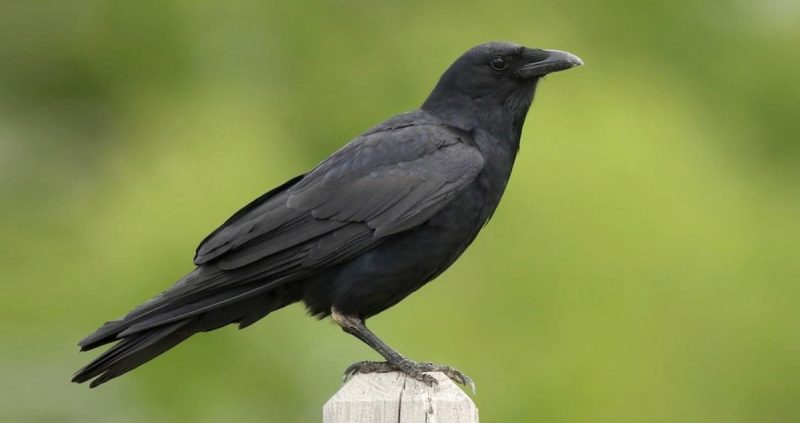
Identification and Physical Features
The Fish Crow is slightly smaller than the American Crow, measuring 14 to 17 inches in length with a wingspan of approximately 30 to 36 inches and a weight of 9 to 16 ounces. It has glossy black feathers similar to the American Crow but is often more compact with a slightly shorter bill. One distinguishing feature is the Fish Crow’s nasal, slightly higher-pitched call compared to the familiar caw of the American Crow. The eyes and beak are proportionally smaller, and the body appears more streamlined, giving it a somewhat delicate appearance in flight.
While similar in appearance to the American Crow, careful observation of size, vocalizations, and habitat preferences can help differentiate the two species. Fish Crows often travel in smaller groups or pairs rather than the large flocks typical of American Crows.
Behavior and Social Traits
Fish Crows are known for their intelligence and adaptability, much like their American counterparts. They feed on a variety of foods including fish, insects, crabs, eggs, small mammals, fruits, and human scraps. They are excellent opportunists, often foraging along shorelines, rivers, and estuaries, which is reflected in their common name. In urban areas, they may scavenge near docks, marinas, or parking lots where food is available.
Fish Crows are vocal birds with distinctive “nyuh-uh” or nasal cawing sounds, which can be confused with American Crows at a distance but are typically sharper and more nasal. Their calls serve the same purposes as other corvids: communication with mates, signaling alarm, and coordinating group movements. These birds are less gregarious than American Crows but maintain strong pair bonds and social connections within small family groups.
Habitat and Distribution in Texas
Fish Crows are most commonly found in eastern and coastal Texas, especially near rivers, estuaries, and marshlands. They thrive in habitats with easy access to water and abundant food sources, often foraging along the Gulf Coast and adjacent inland wetlands. Their presence decreases as one moves westward into drier areas of the state. They prefer trees or dense vegetation for nesting, often close to water bodies that provide food and protection.
Fun Facts
A unique trait of Fish Crows in Texas is their affinity for aquatic prey. They have been observed scavenging dead fish along shores and even stealing small crabs from the edges of marshes. Their adaptability to urban and coastal environments demonstrates the versatility of corvid species in exploiting different ecological niches.
Common Raven (Corvus corax)
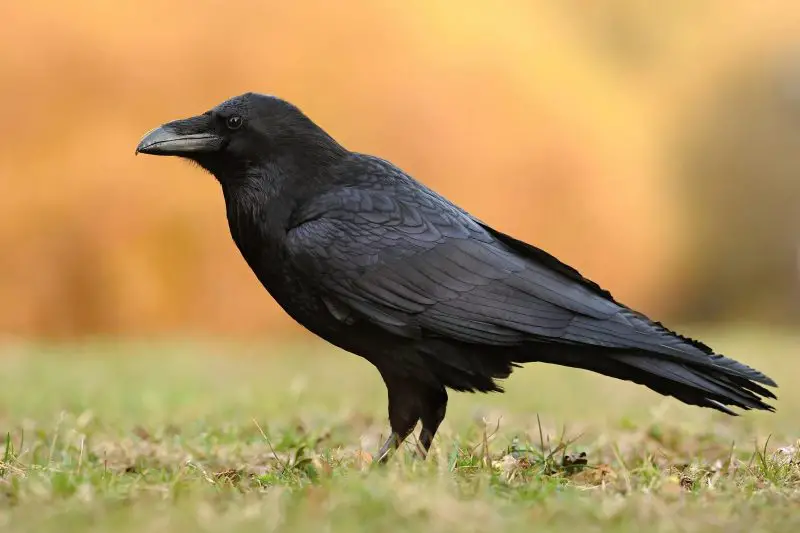
Identification and Physical Features
The Common Raven is the largest of the four corvid species in Texas, measuring 22 to 27 inches in length with a wingspan of 45 to 51 inches and weighing 24 to 51 ounces. Ravens are entirely black like crows, but their feathers often show a bluish or purplish sheen in sunlight. A key feature distinguishing them from crows is their wedge-shaped tail in flight, larger and heavier bill, and shaggy throat feathers known as hackles. Their large size gives them a more robust and formidable appearance compared to crows.
Ravens have strong, powerful wings that allow them to soar, glide, and perform aerial acrobatics not commonly seen in crows. Their dark, expressive eyes contribute to their appearance of intelligence and alertness. Ravens are capable of longer flights and often occupy larger territories than crows, reflecting their more solitary or paired lifestyle.
Behavior and Intelligence
Ravens are extremely intelligent and exhibit complex behaviors, including problem-solving, tool use, and social play. Unlike American Crows, they are often found alone or in pairs rather than in large flocks, although non-breeding individuals may gather in small groups. They feed on carrion, insects, small mammals, fruits, and occasionally food scraps from human settlements. Ravens are opportunistic and highly adaptable, capable of exploiting both wilderness and urban environments.
Ravens are known for their deep, resonant “croak” or “gronk” calls, which are lower-pitched than crow caws. They use these vocalizations for communication between mates, to defend territories, and to signal danger. Ravens are also known to mimic sounds from their environment, including other birds and human noises, demonstrating their impressive vocal flexibility.
Habitat and Distribution in Texas
In Texas, Common Ravens are primarily found in western and northern regions, including the Panhandle and mountainous or desert areas. They prefer open landscapes, cliffs, and wooded canyons, often nesting on cliff ledges, tall trees, or man-made structures that provide elevation and security. Their preference for remote and rugged habitats makes them less commonly observed in urban areas compared to crows.
Fun Facts
Ravens in Texas are famous for their aerial acrobatics, including flips, rolls, and soaring maneuvers during flight. They also form long-term pair bonds and engage in cooperative hunting and play. Their intelligence allows them to solve complex tasks, such as using tools to access food or manipulating objects for entertainment, earning them a reputation as one of the most clever birds in North America.
Chihuahuan Raven (Corvus cryptoleucus)
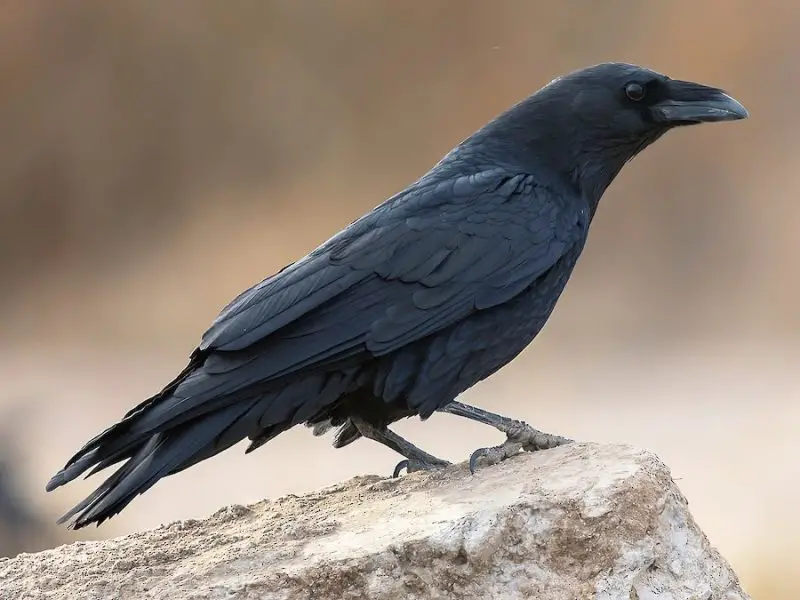
Identification and Physical Features
The Chihuahuan Raven is smaller than the Common Raven, measuring 17 to 21 inches in length with a wingspan of 37 to 42 inches and weighing 14 to 26 ounces. Like other corvids, it has glossy black plumage but exhibits slightly different proportions: a smaller bill, thinner body, and a tail that is wedge-shaped but less pronounced than the Common Raven. Its sleek body and relatively lighter build help distinguish it from the larger Common Raven in western Texas.
This species also has dark, expressive eyes and a smooth black sheen across the feathers. Juvenile Chihuahuan Ravens may have slightly duller plumage and a more streamlined appearance, but adults develop the characteristic glossy black feathers and wedge-shaped tail that make them identifiable.
Behavior and Diet
Chihuahuan Ravens are intelligent, versatile, and opportunistic. They feed on insects, small reptiles, rodents, carrion, seeds, and occasionally human food waste. They are less social than American Crows but may gather in small flocks outside of the breeding season. These ravens are also known for their playful behaviors, including aerial displays and object manipulation, demonstrating their cognitive abilities and problem-solving skills.
Their vocalizations include deep croaks, gurgles, and raspy calls, which are distinct from both crows and Common Ravens. These calls are used for territory defense, communication with mates, and signaling potential food sources.
Habitat and Distribution in Texas
Chihuahuan Ravens are native to the western and southwestern regions of Texas, favoring desert scrublands, open plains, and rocky canyons. They are well-adapted to arid environments and often share habitats with other desert-adapted species. Nests are usually constructed on cliff edges, large trees, or man-made structures, providing safety and a vantage point for detecting predators and prey.
Fun Facts
One interesting fact about Chihuahuan Ravens in Texas is their adaptability to harsh desert environments. They are capable of surviving with limited water sources and can travel long distances to find food. Their intelligence and playful behavior, including aerial flips and cooperative interactions, make them fascinating subjects for observation in the wild.
Best Time and Places to Observe Crows and Ravens in Texas
Crows and ravens are primarily diurnal, so they are most active during the day, especially in the early morning and late afternoon.
American Crows can be spotted almost anywhere in Texas, including urban neighborhoods, parks, farmlands, and forest edges.
Fish Crows are more common near the Gulf Coast, rivers, and wetlands, whereas Common Ravens and Chihuahuan Ravens are generally found in western and northern Texas, including mountains, desert scrublands, and open plains.
Observers can increase their chances of sightings by walking quietly along trails, visiting forest edges, wetlands, or open fields, and using binoculars or spotting scopes to observe from a safe distance.
FAQs About Crows and Ravens in Texas
What species of crows and ravens are found in Texas?
The four species are the American Crow, Fish Crow, Common Raven, and Chihuahuan Raven.
How can I distinguish a crow from a raven?
Ravens are larger, have wedge-shaped tails, shaggy throat feathers, and deeper croaking calls. Crows are smaller, with fan-shaped tails, smoother feathers, and higher-pitched caws.
What do these birds eat?
They are omnivorous and opportunistic, feeding on insects, small animals, fruits, seeds, carrion, and sometimes human food waste.
Where can I see them in Texas?
American Crows are statewide, Fish Crows near eastern rivers and the Gulf Coast, Common Ravens in western mountains and deserts, and Chihuahuan Ravens in southwestern scrublands.
Are crows and ravens intelligent?
Yes, all four species exhibit remarkable problem-solving skills, social behaviors, tool use, and memory, making them among the smartest birds in North America.
Conclusion
Crows and ravens are an essential part of Texas’s wildlife, offering intelligence, adaptability, and fascinating behaviors for observers to enjoy. From the widespread American Crow to the elusive Chihuahuan Raven, these birds are versatile, resourceful, and ecologically valuable. Understanding their appearance, behavior, calls, and habitats allows birdwatchers and wildlife enthusiasts to safely observe and appreciate these remarkable members of the Corvidae family.
Next time you explore urban parks, wetlands, or desert landscapes in Texas, pay attention to the black silhouettes soaring in the sky or hopping along the ground—you may be witnessing the clever and dynamic behaviors of crows and ravens in their natural habitats.



